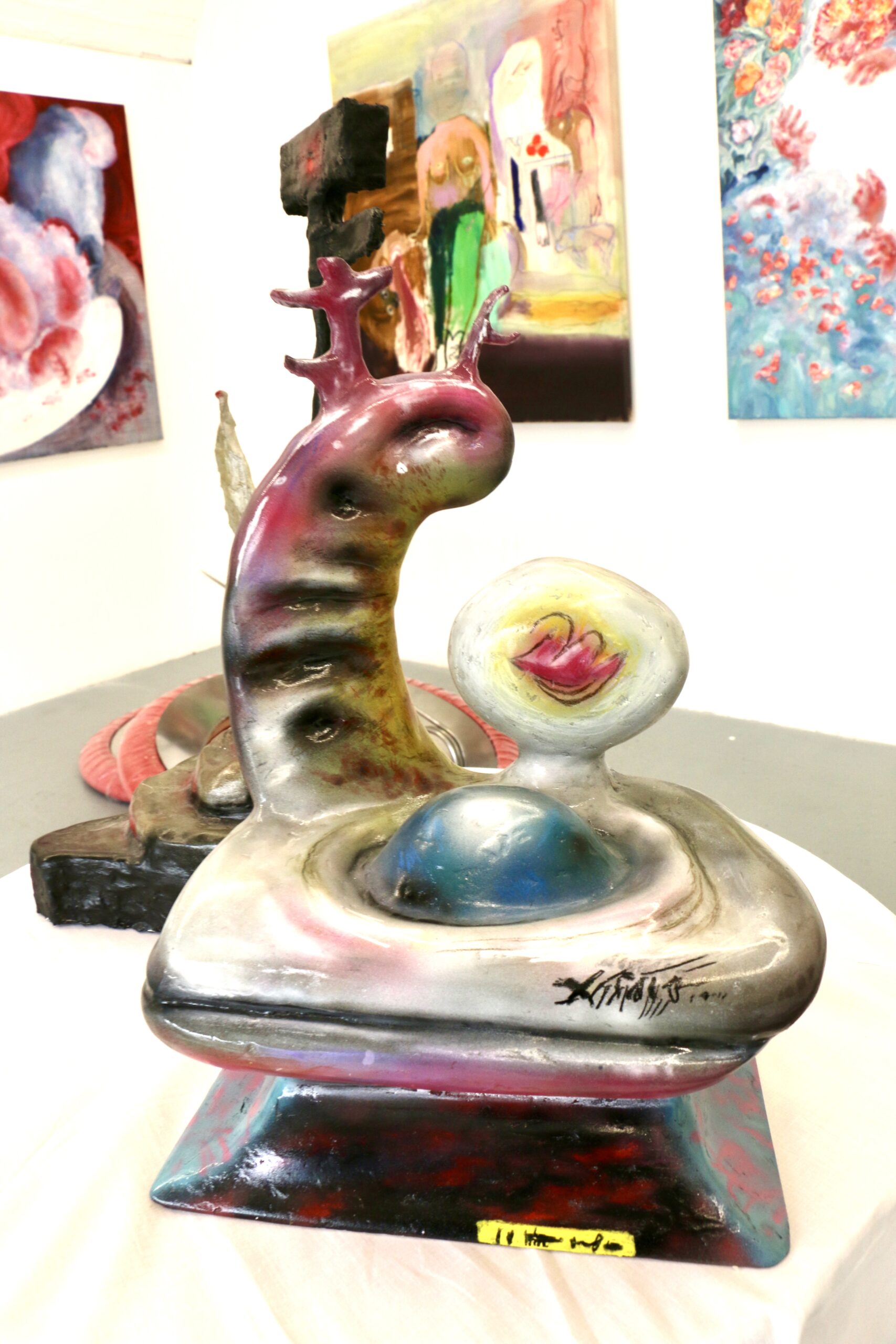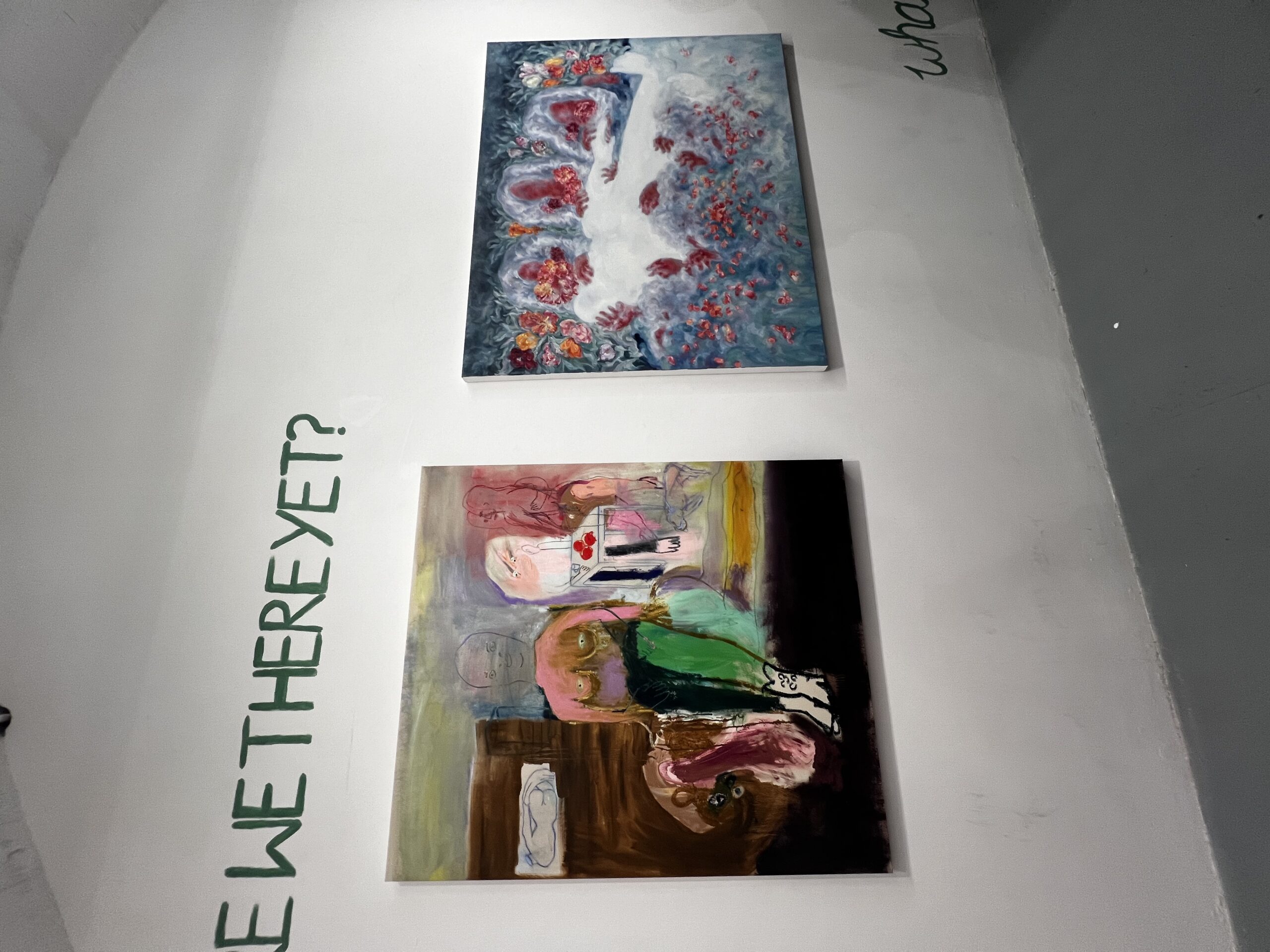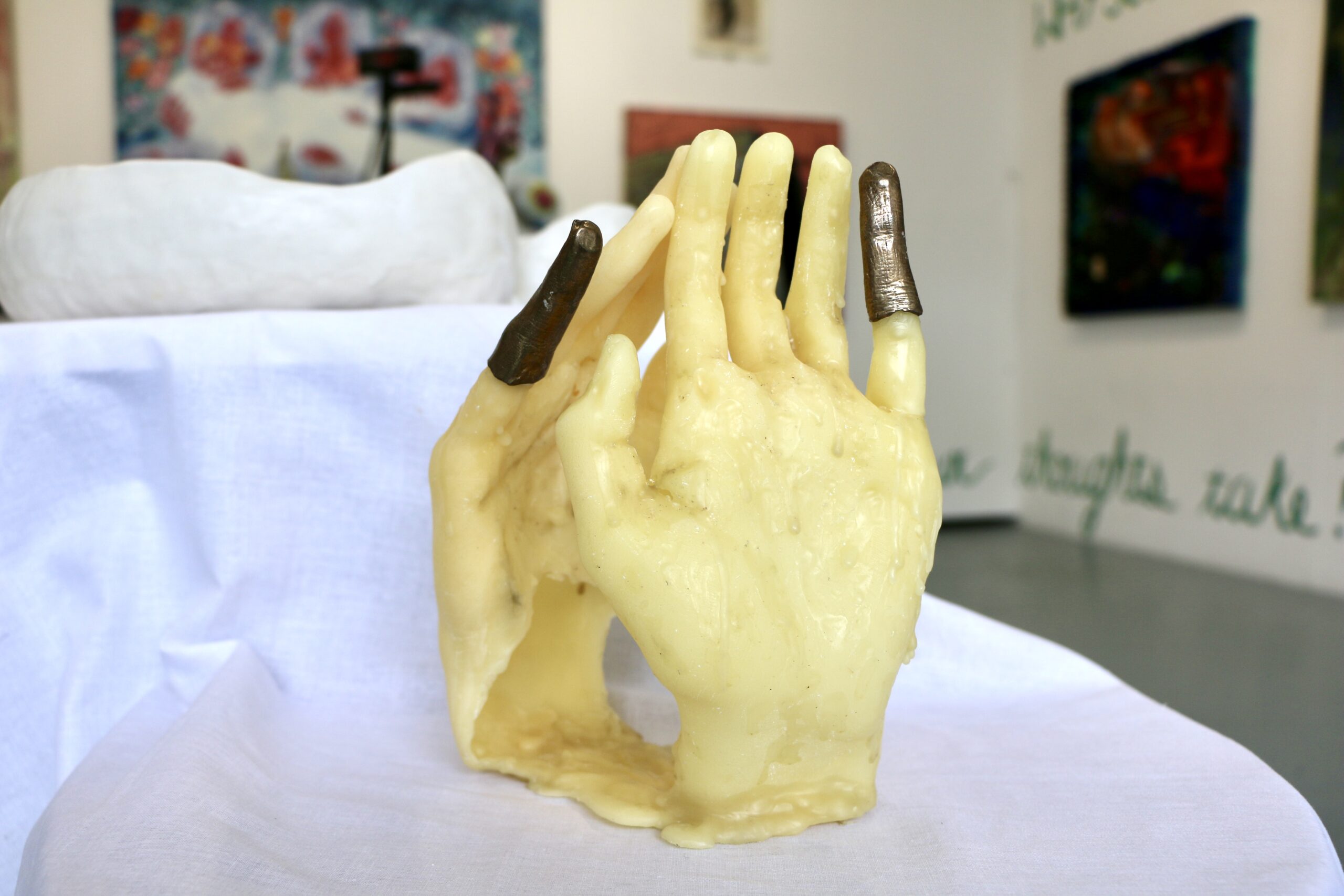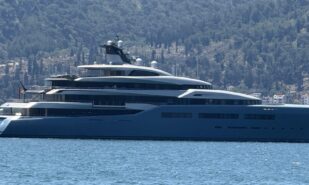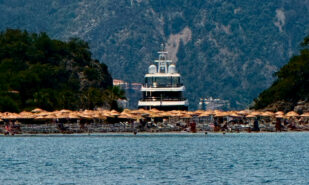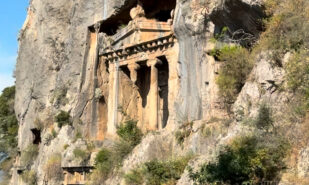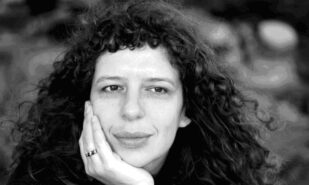This April students of the Royal College of Arts held an independent exhibition, titled Are We There Yet? The exhibition featured work by students from the Painting, Sculpture and Writing courses, and was curated by several students from the Curatorial course. Whilst it is the institution’s policy to promote the work of its students through regular exhibitions within the walls of the College itself, Are We There Yet? stands out from them precisely because of its independent status. It is this independence that makes this exhibition one of the best contemporary art shows put on by students in a long time.
The significance of the independent exhibition Are We There Yet?
 Over twenty artists took part in the vernissage, all of whom use not just different artistic styles, but also operate within radically different mediums. Such variety could pose a serious problem to the organisational work of the curators. But the curators, Alexa Davies, Katerina Matheson, Rachel Morgan, Sabina Eastman and Aurelia Bennett, decided to approach this task with a philosophical lightness: the theme was the “absurdity of life”.
Over twenty artists took part in the vernissage, all of whom use not just different artistic styles, but also operate within radically different mediums. Such variety could pose a serious problem to the organisational work of the curators. But the curators, Alexa Davies, Katerina Matheson, Rachel Morgan, Sabina Eastman and Aurelia Bennett, decided to approach this task with a philosophical lightness: the theme was the “absurdity of life”.
For most of the curators, this was the first independently organised exhibition, so this choice, which has already become quite common in the contemporary art world, does not seem very unusual. However, the curators wanted to bring novelty to this Are We There Yet? question, so all the works were chosen to create a sense of cheerful chaos rather than really answering it with the seriousness that characterises many contemporary exhibitions.The paintings and sculptures in Are We There Yet? create between each other a perfect combination of absurdism, apocalypticismand a kind of existential gloom rendered in bright, playful colours.
Thus, in the abstract paintings of a self-taught artist Gavin Gleeson, who abandoned an American tech start-up for a paintbrush and an Irish farm, abstract allusions to the question of free choice in modern life are glimpsed. At the same time, in his work, Colombian artist Cayetano Sanz De Santamaria turns to humour and metaphorical animals to convey the contemporary reality of Latin America.
A special note should be made of the paintings of Mariana Sanchez, a multidisciplinary artist from Mexico. In her works one can see the influence of artists such as Francisco Goya, and at the same time they are linked to the era of the Internet, social media, and scenes from everyday life. The rising star of the Paintingcourse was the Chinese-born artist Zhenlin Zhang, who stood out from her peers for the airiness and tenderness of her work, inspired by her venture into Tibetan culture. Prior to this exhibition, the young artist had already been featured in the 33rdedition of the Art Maze Mag.
From the Sculpture course, Dom Sebastian, who has been recently gaining a lot of attention in London and on social media, took part in the exhibition. Having long worked in an abstract style, Dom presented their new works made with artificial intelligence and a 3D printer. In them, the sculptor reveals the connection between the rapidly changing contemporary pop culture and themes of desire and disgust. The small figures, painted in cosmic colours and resembling the rides of travelling fairs, evoke feelings of the familiar and the unfamiliar at the same time. Another peculiar commentary on contemporary pop culture were the giant pins by Max King. Made of steel and aluminium and absolutely identical, these red pins identify the mass production of almost any modern item of clothing and household items.
Students on the Writing MA course have produced brand new material, largely inspired by the particular work of their peers. These texts were specially printed by the curators for the exhibition in the form of small books, so that visitors could take these works as souvenirs. Each text differed in style, form and content. For example, Yuna Goda’s work was in the form of a doctor’s note addressed in a humorous form to the author herself. At the same time, Salomé Mercier’s poem-list described a typical summer holiday of a modern young woman.
In addition to the booklets with texts by the participating writers, visitors were also invited to take away a red nose mask as a souvenir. The noses were prepared by Caitlin Hazel — a sculptor and… a former student of the clown school. In her work she often emphasises the idea that the closest profession to clowning is that of an artist, as in both cases it is the connection with the audience that helps the artist to understand the direction in which to work.
This is why the exhibition Are We There Yet? is so important both for the artists and curators who organised it and for the visitors. It is not even the fact that this exhibition was the first such project for many of its participants, but the extraordinary opportunity to bring together such different directions and views in art. Are We There Yet? showcased some of London’s most contemporary and independent artists and, given the Royal College of Art’s reputation as a factory for future stars of the art community, many of them will soon be exhibiting at events much less independentfrom the mainstream art institutions.
This also makes this event quite important and interesting. In recent years, with the popularisation of art as an education and career path, contemporary art has noticeably moved away from the image of revolutionary and novel that was still generally accepted quite recently. This is due to the fact that schools of art often do not allow aspiring artists to work in their personal areas of interest, explaining this by the requirements of the modern public and potential customers for their work in the future. However, this practice kills creativity because of the desire to meet certain standards. Are We There Yet? was organised almost independently from the Royal College of Art, which allowed all its participants to prepare the works that they really consider important, without taking into account the standards and requirements of the institution.
It should be said that in recent years, along with the popularisation of art as an educational and career path, the image of revolutionary and novelty of this sphere has been largely lost. In art schools, aspiring artists often fail to work in directions that are attractive to them; to a large extent, this approach is subordinate to the requirements of the contemporary public and potential patrons. From this perspective, the independent student exhibition was particularly valuable in terms of creativity. Are We There Yet?allowed all the participants to prepare the works that they themselves consider important, without taking into account the standards and requirements of the institution. And as the Royal College of Art is regarded as a factory for the future stars of the art community, it was interesting to get to know the work of its students before many of them exhibit at events that are much less independent from the mainstream art institutions.



